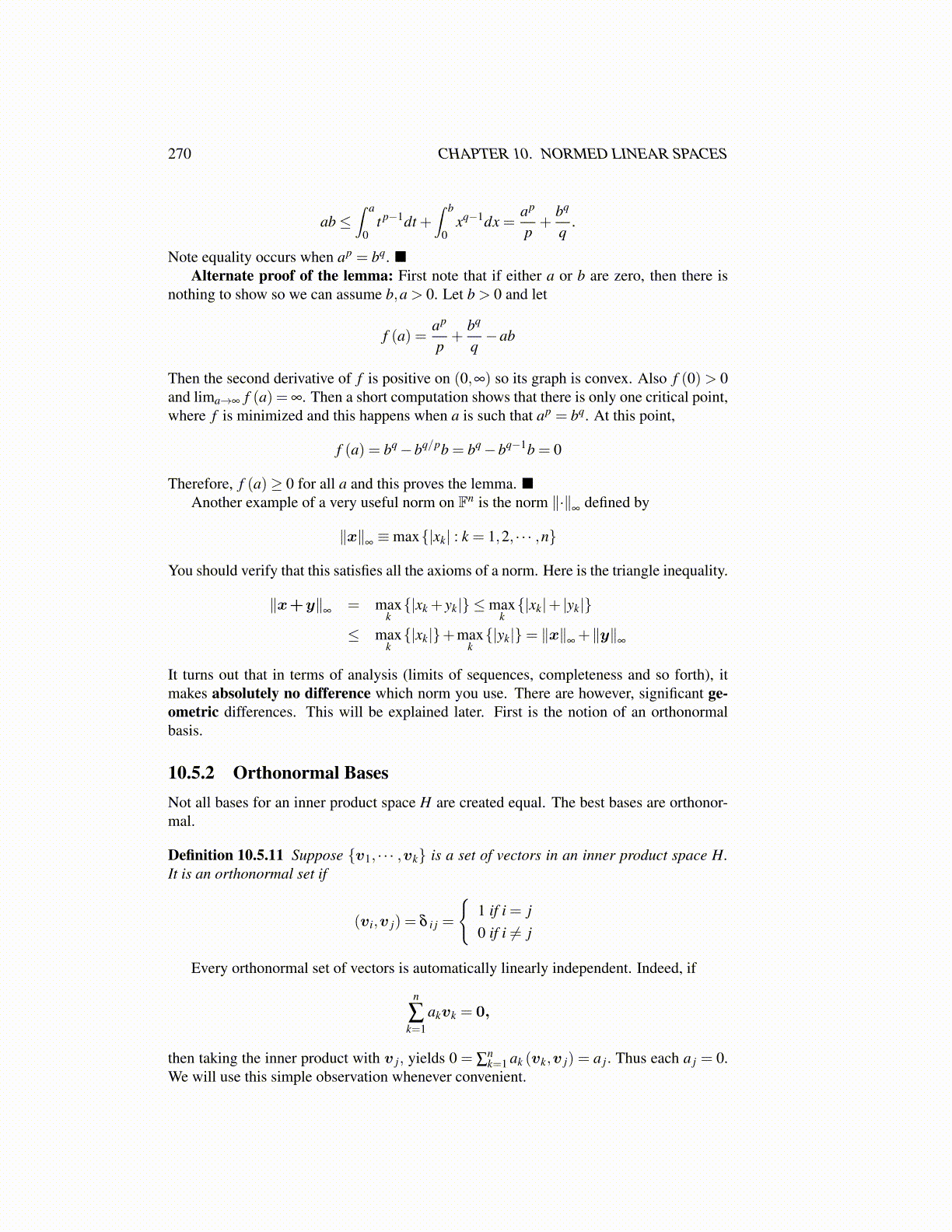
270 CHAPTER 10. NORMED LINEAR SPACES
ab≤∫ a
0t p−1dt +
∫ b
0xq−1dx =
ap
p+
bq
q.
Note equality occurs when ap = bq. ■Alternate proof of the lemma: First note that if either a or b are zero, then there is
nothing to show so we can assume b,a > 0. Let b > 0 and let
f (a) =ap
p+
bq
q−ab
Then the second derivative of f is positive on (0,∞) so its graph is convex. Also f (0)> 0and lima→∞ f (a) = ∞. Then a short computation shows that there is only one critical point,where f is minimized and this happens when a is such that ap = bq. At this point,
f (a) = bq−bq/pb = bq−bq−1b = 0
Therefore, f (a)≥ 0 for all a and this proves the lemma. ■Another example of a very useful norm on Fn is the norm ∥·∥
∞defined by
∥x∥∞≡max{|xk| : k = 1,2, · · · ,n}
You should verify that this satisfies all the axioms of a norm. Here is the triangle inequality.
∥x+y∥∞
= maxk{|xk + yk|} ≤max
k{|xk|+ |yk|}
≤ maxk{|xk|}+max
k{|yk|}= ∥x∥∞
+∥y∥∞
It turns out that in terms of analysis (limits of sequences, completeness and so forth), itmakes absolutely no difference which norm you use. There are however, significant ge-ometric differences. This will be explained later. First is the notion of an orthonormalbasis.
10.5.2 Orthonormal BasesNot all bases for an inner product space H are created equal. The best bases are orthonor-mal.
Definition 10.5.11 Suppose {v1, · · · ,vk} is a set of vectors in an inner product space H.It is an orthonormal set if
(vi,v j) = δ i j =
{1 if i = j0 if i ̸= j
Every orthonormal set of vectors is automatically linearly independent. Indeed, if
n
∑k=1
akvk = 0,
then taking the inner product with v j, yields 0 = ∑nk=1 ak (vk,v j) = a j. Thus each a j = 0.
We will use this simple observation whenever convenient.